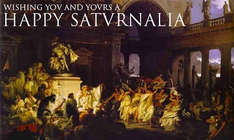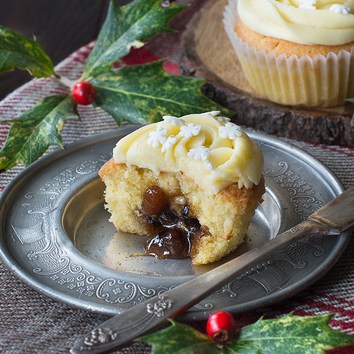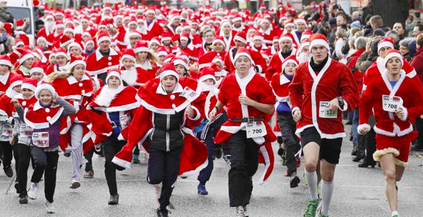- Home
- News Stream
-
Services
- Gateshead - Naloxone Supply Service
- Gateshead - Alcohol IBA
- Winter Access Services
- Tackle High BP
- Microspirometry
- 2019-20 South Tyneside Council Flu Service
- 2019-20 Gateshead Council Flu Service
- GP2P Service
- CPRS
- NHS Health Checks - Gateshead
- NHS Health Checks - South Tyneside
- Think Pharmacy First Gateshead
- Think Pharmacy First ST
- EHC-South Tyneside
- EHC-Gateshead
- Events
- Contact Us
- Search
Ph'estive LPC Webpage
Welcome to LPC Christmas page. Our traditional Ph'estive page. Following the success of last years page the Comms team decided to again outsource our Christmas content to our committe members!!
The brief was simple submit someting Ph'estive. This year the committee have taken to the internet to find an eclectic mix of festive articles, videos, recipes and images.
The Comms team hope you enjoy the page and would like to wish you all a Merrry Christmas and all the best for the New Year.
The brief was simple submit someting Ph'estive. This year the committee have taken to the internet to find an eclectic mix of festive articles, videos, recipes and images.
The Comms team hope you enjoy the page and would like to wish you all a Merrry Christmas and all the best for the New Year.
Seasonal Greetings and Best Wishes for 2019
From all the members of the LPC
|
|

’Twas the night before Christmas, when all through the shop, Not a printer was stirring; they’d come to a stop. Prescriptions were filed in their boxes with care, In hopes the bank holiday soon would be there.
The workers were bound towards home for the break, With visions of turkey, and mince pies to bake. I was still closing up and lost deep in thought, Trying to ensure that I’d done all I ought. When out on the step there arose such a clatter, I sprang from the dispensary: What was the matter?Away to the shopfloor I flew like a flash, Tore open the door and out I did dash. The street lamps shone down on the new fallen snow, Tinting bright orange the cold pavement below. When what to my wondering eyes should appear, But a thumping great sleigh and eight smelly reindeer. With a plump, white haired driver, so lively and quick, I knew in a moment it must be St Nick. “Good evening” said he,“Sorry to be late, “I need some advice. You help would be great.” He tied up the reindeer and swept in through the door, His red robes with fur-trim trailing the floor. With his pink cheeks so plump and his belly so fat, Could this be a customer for orlistat? But he said “Have you something for aches in the back? I’m not getting younger and then there’s this sack. I’ve only tonight to deliver this load, And I’m just about ready to take to the road.” I asked about drugs and other conditions, Offered analgesia, and admonitions. On climbing down chimneys with gifts, heavy-weighted, And suggested some help, but then St Nick stated: “Elves are wonderful craftsmen, but not very strong, They can’t really help me, well not for too long; I’ll have to continue, I’m not very sure how, It’s something Elf and Safety should never allow.” “And what can you give me for dire indigestion? Can I eat more healthily, that is the question.” We discussed nutrition from mince pies and booze I quietly reminded him of drink-driving rules. I suggested more carrots and fewer mince pies, Reducing fat in his diet and portion size. I pointed out binge drinking was very unwise, And extolled the huge benefits of exercise. “And now,” he said, smiling, “I’ve more questions for you, Have you been a good pharmacist, the whole year through? Have you cared for your patients, whoever they be? Kept up to date and done your CPD?” I replied that I’d tried to do all that I could, To use all my knowledge for everyone’s good. Being professional, as all pharmacists should St Nick listened gravely, nodding where he stood. He left with an antacid and paracetamol, But the leaflets I gave him, the reindeer ate ’ em all, “Just remember,” I called, “beware of the sherry Let the deer do the driving if you are too merry.” He sprang to his sleigh, to his team gave a cry, And away they all flew, hooves and heads all held high. And I heard him exclaim, as they cleared the wall, “I’ll see you next year, happy Christmas to all!” Next morning I woke to a wonderful sight, St Nicholas had filled my stocking that night. With a note saying “thanks to my own pharmacist, You’ll never again be on my naughty list!” —BY SARAH MARSHALL WITH APOLOGIES TO CLEMENT CLARKE MOORE |
|
|
|
If you enjoy running, then here are five top tips for running through the winter months and festive period.
I hope you enjoy your run. |
|
|
|

The middle of winter has long been a time of celebration around the world. Indeed centuries before the arrival of Jesus, early Europeans celebrated light and birth in the darkest days of winter. Many peoples rejoiced during the winter solstice, when the worst of the winter was behind them and they could look forward to longer days and extended hours of sunlight. The end of December was a perfect time for celebration in most areas of Europe. At that time of year, most cattle were slaughtered so they would not have to be fed during the winter. For many, it was the only time of year when they had a supply of fresh meat. In addition, most wine and beer made during the year was finally fermented and ready for drinking.
In Scandinavia, the Norse celebrated Yule from December 21, the winter solstice, through January. In recognition of the return of the sun, fathers and sons would bring home large logs, which they would set on fire. The people would feast until the log burned out, which could take as many as 12 days. The Norse believed that each spark from the fire represented a new pig or calf that would be born during the coming year.
In Germany, people honored the pagan god Oden during the mid-winter holiday. Germans were terrified of Oden, as they believed he made nocturnal flights through the sky to observe his people, and then decide who would prosper or perish. Because of his presence, many people chose to stay inside.
In ancient Rome, where winters were not as harsh as those in the far north, Saturnalia—a holiday in honor of Saturn, the god of agriculture—was celebrated. Beginning in the week leading up to the winter solstice and continuing for a full month, Saturnalia was a hedonistic time, when food and drink were plentiful and the normal Roman social order was turned upside down. For a month, slaves would become masters. Peasants were in command of the city. Business and schools were closed so that everyone could join in the fun.
Also around the time of the winter solstice, Romans observed Juvenalia, a feast honoring the children of Rome. In addition, members of the upper classes often celebrated the birthday of Mithra, the god of the unconquerable sun, on December 25. It was believed that Mithra, an infant god, was born of a rock. For some Romans, Mithra’s birthday was the most sacred day of the year.
In Scandinavia, the Norse celebrated Yule from December 21, the winter solstice, through January. In recognition of the return of the sun, fathers and sons would bring home large logs, which they would set on fire. The people would feast until the log burned out, which could take as many as 12 days. The Norse believed that each spark from the fire represented a new pig or calf that would be born during the coming year.
In Germany, people honored the pagan god Oden during the mid-winter holiday. Germans were terrified of Oden, as they believed he made nocturnal flights through the sky to observe his people, and then decide who would prosper or perish. Because of his presence, many people chose to stay inside.
In ancient Rome, where winters were not as harsh as those in the far north, Saturnalia—a holiday in honor of Saturn, the god of agriculture—was celebrated. Beginning in the week leading up to the winter solstice and continuing for a full month, Saturnalia was a hedonistic time, when food and drink were plentiful and the normal Roman social order was turned upside down. For a month, slaves would become masters. Peasants were in command of the city. Business and schools were closed so that everyone could join in the fun.
Also around the time of the winter solstice, Romans observed Juvenalia, a feast honoring the children of Rome. In addition, members of the upper classes often celebrated the birthday of Mithra, the god of the unconquerable sun, on December 25. It was believed that Mithra, an infant god, was born of a rock. For some Romans, Mithra’s birthday was the most sacred day of the year.
|
|
|
|

I
|
Ingredients
For the brandy buttercream
To finish
|

Instructions
- Pre-heat your oven to 190ºC/170ºC fan.
- Beat together the butter (100g) and caster sugar (100g) until light and fluffy.
- Add the eggs (2 eggs) one at a time, beat after adding each egg until full combined.
- Add the almond extract (1 tsp).
- Sift in the self-raising flour (100g) and ground almonds (25g) and mix until fully combined.
- Divide the mixture equally between 6 cupcake cases.
- Use the back of a teaspoon to make a dip in the centre of each cupcake.
- Add a generous teaspoon of mincemeat into the centre of each cupcake (120g in total).
- Bake for 20-25 minutes until the top of the cupcakes is golden (sadly the skewer test doesn’t work on these due to the mincemeat centre).
- Place onto a cooling rack to cool while you make the buttercream.
- Make the buttercream by beating 75g butter until soft. Add the icing sugar (75g) a spoon at a time (as this helps to prevent sugar flying everywhere) and beat until fully combined.
- If you’ve been using a mixer you want to switch to doing the next bit by hand. Add the brandy (35ml) very gradually to the butter/icing sugar mix. Beat in each addition until fully combined before adding more.
- Place the buttercream into a piping bag and pipe into the cupcakes.
- Top with a few festive sprinkles.
Click the image to enlarge.

- Norwegian scientists have hypothesized that Rudolph’s red nose is probably the result of a parasitic infection of his respiratory system.
- Most of Santa’s reindeer have male-sounding names, such as Blitzen, Comet, and Cupid. However, male reindeers shed their antlers around Christmas, so the reindeer pulling Santa’s sleigh are likely not male, but female or castrated.
- During the Christmas season, nearly 28 sets of LEGO are sold every second.

Each year there are approximately 20,000 “rent-a-Santas” across the United States. “Rent-a-Santas” usually undergo seasonal training on how to maintain a jolly attitude under pressure from the public. They also receive practical advice, such as not accepting money from parents while children are looking and avoiding garlic, onions, or beans for lunch.

- Ancient peoples, such as the Druids, considered mistletoe sacred because it remains green and bears fruit during the winter when all other plants appear to die. Druids would cut the plant with golden sickles and never let it touch the ground. They thought it had the power to cure infertility and nervous diseases and to ward off evil.
- Mistletoe (Viscum album) is from the Anglo-Saxon word misteltan, which means “little dung twig” because the plant spreads though bird droppings.
- Ancient peoples, such as the Druids, considered mistletoe sacred because it remains green and bears fruit during the winter when all other plants appear to die. Druids would cut the plant with golden sickles and never let it touch the ground. They thought it had the power to cure infertility and nervous diseases and to ward off evil.
- Mistletoe (Viscum album) is from the Anglo-Saxon word misteltan, which means “little dung twig” because the plant spreads though bird droppings.

Christmas stockings allegedly evolved from three sisters who were too poor to afford a marriage dowry and were, therefore, doomed to a life of prostitution. They were saved, however, when the wealthy Bishop Saint Nicholas of Smyrna (the precursor to Santa Claus) crept down their chimney and generously filled their stockings with gold coins.

The Viking god Odin is one precursor to the modern Santa Claus. According to myth, Odin rode his flying horse, Sleipnir (a precursor to Santa’s reindeer), who had eight legs. In the winter, Odin gave out both gifts and punishments, and children would fill their boots or stockings with treats for Sleipnir.
The Viking god Odin is one precursor to the modern Santa Claus. According to myth, Odin rode his flying horse, Sleipnir (a precursor to Santa’s reindeer), who had eight legs. In the winter, Odin gave out both gifts and punishments, and children would fill their boots or stockings with treats for Sleipnir.

According to data analyzed from Facebook posts, two weeks before Christmas is one of the two most popular times for couples to break up. However, Christmas Day is the least favorite day for breakups
According to the United Nations Children’s Fund (UNICEF), there are 2,106 million children under age 18 in the world. If there are on average 2.5 children per household, Santa would have to make 842 million stops on Christmas Eve, traveling 221 million miles. To reach all 842 million stops, Santa would need to travel between houses in 2/10,000 second, which means he would need to accelerate 12.19 million miles (20.5 billion meters) per second on each stop. The force of this acceleration would reduce Santa to “chunky salsa.






















